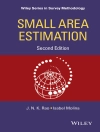The book constitutes an introduction to stochastic calculus, stochastic differential equations and related topics such as Malliavin calculus. On the other hand it focuses on the techniques of stochastic integration and calculus via regularization initiated by the authors. The definitions relies on a smoothing procedure of the integrator process, they generalize the usual Itô and Stratonovich integrals for Brownian motion but the integrator could also not be a semimartingale and the integrand is allowed to be anticipating. The resulting calculus requires a simple formalism: nevertheless it entails pathwise techniques even though it takes into account randomness. It allows connecting different types of pathwise and non pathwise integrals such as Young, fractional, Skorohod integrals, enlargement of filtration and rough paths. The covariation, but also high order variations, play a fundamental role in the calculus via regularization, which can also be applied for irregularintegrators. A large class of Gaussian processes, various generalizations of semimartingales such that Dirichlet and weak Dirichlet processes are revisited. Stochastic calculus via regularization has been successfully used in applications, for instance in robust finance and on modeling vortex filaments in turbulence. The book is addressed to Ph D students and researchers in stochastic analysis and applications to various fields.
Cuprins
– 1. Review on Basic Probability Theory. – 2. Processes, Brownian Motion and Martingales. – 3. Fractional Brownian Motion and Related Processes. – 4. Stochastic Integration via Regularization. – 5. Itô Integrals. – 6. Stability of the Covariation and Itô’s Formula. – 7. Change of probability and martingale representation. – 8. About finite quadratic variation: examples. – 9. Hermite Polynomials and Wiener Chaos. – 10. Elements of Wiener Analysis. – 11. Elements of Non-causal Calculus. – 12. Itô Classical Stochastic Differential Equations. – 13. Itô SDEs with Non-Lipschitz Coefficients. – 14. Föllmer–Dirichlet Processes. – 15. Weak Dirichlet Processes. - Stochastic Calculus with
n-Covariations. - Calculus via Regularization and Rough Paths.
Despre autor
Francesco Russo studied at the EPFL Lausanne and he obtained his Ph D on ”Markov random fields’. Then he spent several postdocs in Bielefeld, Bonn and ENST Paris (now Telecom Paris). Since then he has been active in various subjects of stochastic analysis with some interests in applications to mathematical physics, mathematical finance and energy management. He has coorganized many conferences in stochastic analysis and in particular the so called ‘Ascona Conference’ which has been quite influencial. He was coeditor of eight volumes of proceedings of that conference, published by Birkhäuser. He has had regular collaborations with many international institutions such as the University of Bielefeld, the EPFL Lausanne, the University of Campinas (Brazil), the Luiss University in Rome. He was professor at the university of Paris 13 for almost 15 years where he directed the probability and statistics research time and he contributed to the development of probability thereby andhe spent two years in the research institution Inria Rocquencourt and in Ecole des Ponts Paris Tech.
Pierre Vallois started his research career at the Laboratoire de Probabilités in Paris VI. He then held a professorship at the University Henri Poincaré (now the University of Lorraine) and carried out his research at the Institut Elie Cartan de Lorraine, where he had several responsibilities. He was head of the probability and statistics team contributing significantly to its development organizing 6 probability meetings. He was in charge of the mathematics department in the Faculty of Science and Technology. He was director of the Charles Hermite Federation, which promotes multidisciplinary collaborations between mathematics, computer science and automation, organizing three forums with industrialists. Since 2018 he is professor emeritus. His research topics are various: Brownian motion, Lévy and diffusion processes, generalized stochastic calculus and Brownian penalization. Since 2005, he has turned to applications and probabilistic and statistical modeling: tumor growth, biological sequence analysis (DNA), health (allergy), gene networks and insurance.












